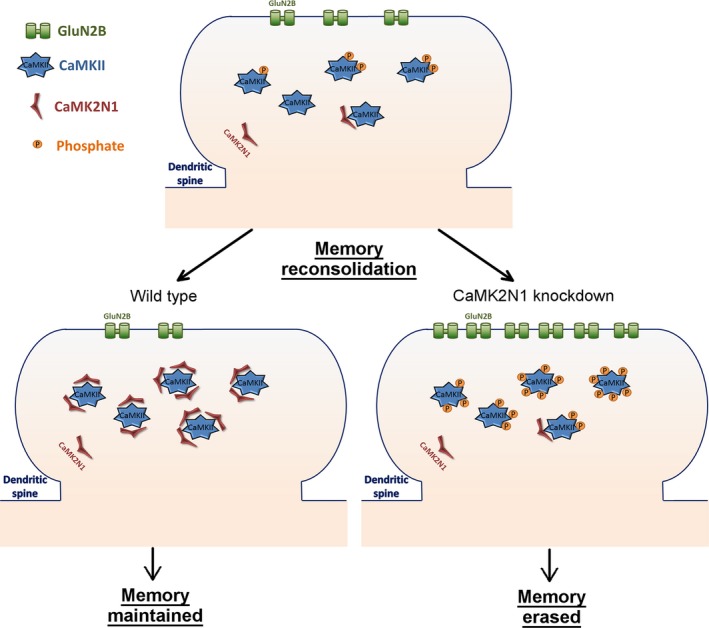Figure 2.

This schematic representation shows that CaMKII regulates the levels of GluN2B‐containing NMDAR in the synapse after retrieval, affecting the maintenance of a memory. This hypothesis could explain the observations of Vigil et al. (2017). Once memory is retrieved, CaMKII increases GluN2B localization within the synapse, starting a memory destabilization process. In normal (wild‐type) animals, this process is stopped by expression of CaMK2N1, which inhibits CaMKII and blocks the GluN2B‐induced memory destabilization. On the other hand, in Vigil et al. (2017), CaMK2N1 knockdown caused memory erasure because of excessive GluN2B‐induced memory destabilization resulting from the uncontrolled CaMKII activity and consequent increase in synaptic levels of GluN2B. GluN2B increase could be related to anchoring of extrasynaptic GluN2B in the post‐synaptic density (PSD) and/or decrease in GluN2B degradation. The mechanism is still unknown.
